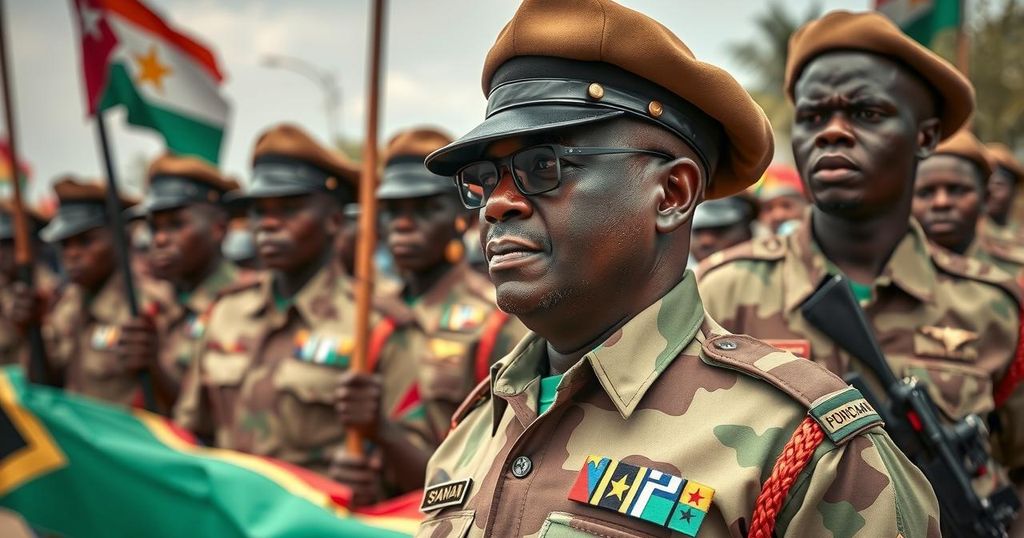The Turmoil of Sudan: From Bashir to Military Coup and Humanitarian Crisis
Sudan’s political climate deteriorated significantly beginning December 2018 due to economic struggles, leading to widespread protests against President Bashir, resulting in his ousting by the military in April 2019. A subsequent transitional government was formed but faced instability and was ultimately dissolved by a military coup in October 2021. The ongoing conflict has created a dire humanitarian crisis in the country.
The political landscape in Sudan underwent significant turmoil beginning in December 2018, amid a deteriorating economy that incited widespread protests against President Omar al-Bashir’s regime. Initially sparked by rising commodity prices and subsidy cuts, the demonstrations escalated to demands for Bashir’s resignation. By February 2019, recognizing the persistence of protests, Bashir declared a state of emergency, dissolved existing governments, and appointed military leaders, yet the protests intensified, culminating in his ousting by the military on April 11, 2019. The military subsequently announced plans for a transitional government, although the response from protestors demanded civilian leadership instead.
Following Bashir’s fall, a complex negotiation process ensued between military leaders and civilian representatives, resulting in a power-sharing agreement named the constitutional declaration in August 2019. This agreement established a Sovereignty Council co-led by military and civilian members, with General Abdel Fattah al-Burhan as its head and Abdalla Hamdok as prime minister. However, ongoing tensions, military interference, and economic challenges strained this fragile alliance, leading to a military coup on October 25, 2021. The military, now under Burhan’s directive, dissolved the Sovereignty Council and arrested civilian leaders, prompting widespread protests.
Although a subsequent agreement in November 2021 reinstated Hamdok as prime minister, it was met with skepticism and rejection by many civilian groups, who felt betrayed. Hamdok resigned in January 2022, and his successor faced continued instability and protests, alongside rising violence between the military and the Rapid Support Forces (RSF). The country descended into conflict with devastating humanitarian consequences, ultimately being labeled the largest humanitarian crisis recorded, with millions displaced and in need of assistance as of December 2024.
Sudan’s modern political history is punctuated by cycles of military and civilian governance, with the 2019 protests marking a significant shift toward demands for democratic governance. The reign of Omar al-Bashir, characterized by authoritarian rule and economic hardship, galvanized citizen dissent, which erupted as mass protests in late 2018. These protests reflected accumulated grievances against the government, notably in response to economic mismanagement and human rights violations. The military’s intervention in April 2019 led to a transitional government aimed at stabilizing the country and moving toward democratic elections, yet ongoing power struggles between military factions have perpetuated political instability.
In conclusion, the political evolution in Sudan after the overthrow of Omar al-Bashir illustrates the complexities of transitioning from authoritarian rule to a civilian-led government. The interplay of military power, civilian aspirations, and external pressures defined the sequence of events following the 2019 coup. Despite efforts to establish a representative government, the resurgence of military coups and internal conflict has undermined progress, intensifying humanitarian crises and highlighting the urgent need for sustainable governance and peace in Sudan.
Original Source: www.britannica.com








Post Comment